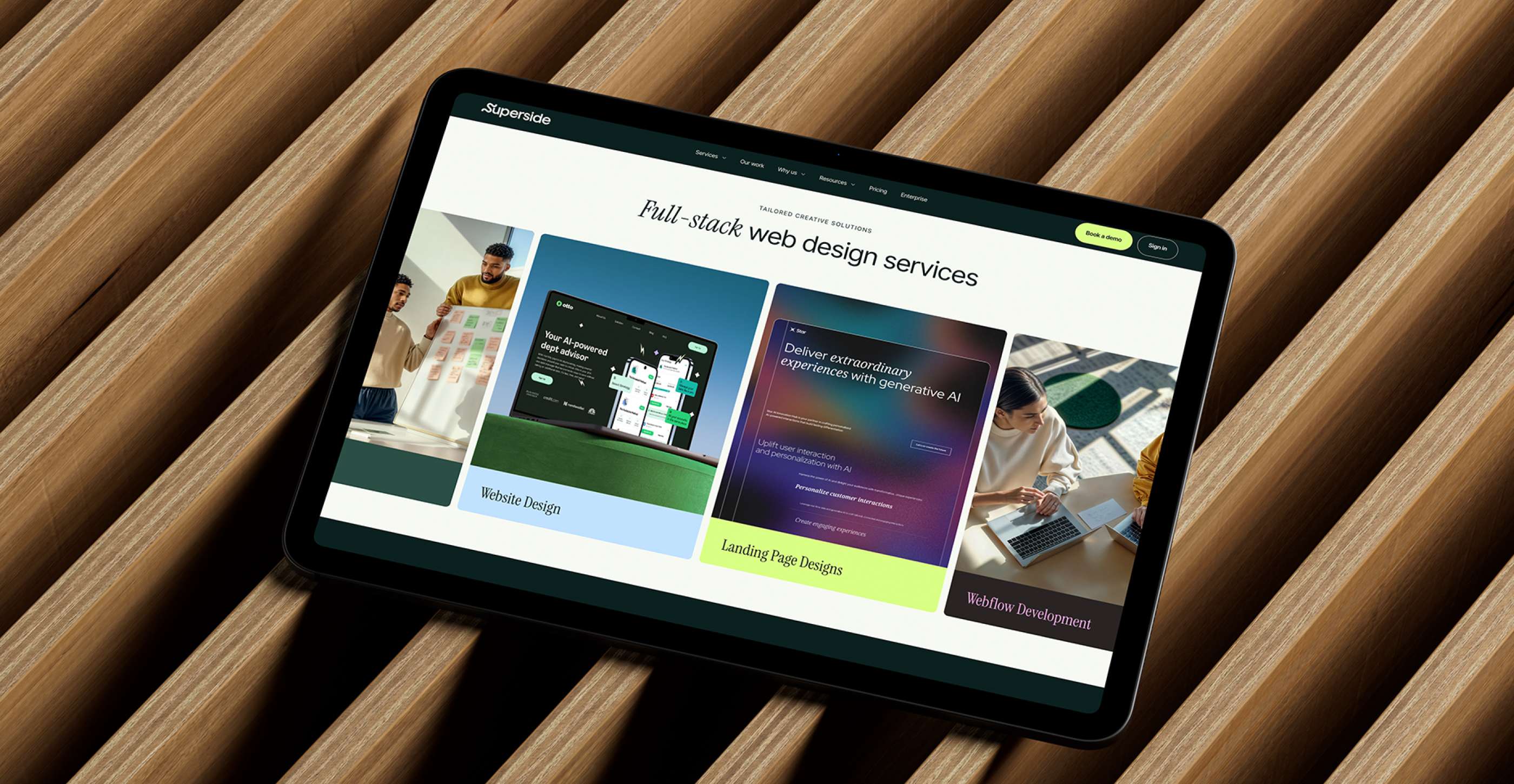How Data-Driven Marketing Can Influence Your Ad Designs


Good data-driven marketing and advertising should be a marriage of logic and art, analytical and creative. We’ve come a long way from the Mad Men days where all you needed was one rockstar campaign idea and you were off to the races. Now, marketers have access to in-depth data that can (and should) inform everything from your campaign concepts, placements, and of course, ad design.
However, depending on your audience or brand, it can be tough to strike the right balance between being data-driven and being creative.
Fortunately, we know two experts that have mastered the art of combining the left brain (data) and the right brain (creativity). For our Ad Designpalooza on-demand event, we got the chance to virtually sit down with data-driven marketing experts Shanee Ben-Zur, CMO at Crunchbase, and Hakim Garuba, Performance Marketing Manager at Square. You can watch the video and more sessions by following the link below!
Whether you’re just diving into the world of performance marketing and data-driven ads or you’re looking to refine your existing strategy, we know you’ll walk away with some great takeaways here.
In this post, you can expect to learn about:
- How to properly leverage data in marketing and advertising
- The secret behind data-driven design (and why you need it)
- Tips for getting started and converting your data into actionable insights
Ready? Let’s get into it.
How Do You Leverage Data in Marketing?
In today’s digital advertising landscape, marketers have access to vast amounts of data that can help them create more targeted campaigns and increase their campaigns’ success.
For example, let’s say that a local restaurant decides to run a Facebook ad.
- If they have good insights into their customer demographics and behavior, they could create different versions of the ad that target their most common types of customers, run at priority times, target specific neighborhoods, include relevant keywords, and so on.
- From there, the restaurant could continue to refine, enhance and improve their marketing campaigns based on how they perform, and decide to put more budget into the winning ad sets to maximize results.
Credit: VWO
This is data-driven marketing in a nutshell, specifically on the ad strategy side.
The same approach can be taken on a variety of marketing strategies outside of ad creatives, including email marketing, content marketing, social media and more. But, according to Shanee from Crunchbase, when it comes to data: “You can have too much of a good thing.”
Here’s why:
- There are countless variables that marketers can test, but people can quickly become overwhelmed with data.
- Depending on your resources and capacity, you may not be able to create hundreds of different versions of an ad campaign and run a million tests.
- And sometimes, it’s just not necessary to run a test, or listen to the data!
That’s why one of the most critical facets of data-driven marketing is getting alignment across all key stakeholders on what success looks like for a campaign and how you plan to measure it.
If stakeholders are not aligned within your organization, you’ll get different stakeholders measuring success by different standards. So,one thing might look like success to one stakeholder and not to another.
What is Data-Driven Design?
Data-driven design is the process of using data on your audience’s motivations, preferences, and behaviors to inform your creative production—including both quantitative and qualitative customer data that your internal team is tracking. This also includes running tests on your creatives to see what performs best and using this to information to influence your future designs.
For example, if you know that video ads perform better than static graphic ads, you probably want to produce more video ads. If your audience is mainly made up of professional photographers, then you’ll want to use visuals that speak to this persona.
70% of our Ad Designpalooza attendees indicated that when it comes to advertising, data should inform creative “a lot”. However, branding is also an important consideration when designing ads, which means that data can’t totally dictate how the creative should look.
“In my experience, some of the most effective things are kind of the ugliest,” says Shanee. For example, although HTML-based and image-based emails may look better, in reality, simpler emails more often than not outperform the more complex ones – and plain-text emails perform best of all.
But focusing too heavily on performance and data and not enough on brand could also hurt your business if it leads to an inconsistent look and feel across channels.
Ultimately, effective data-driven creative needs to strike a balance between brand and performance. As we mentioned, combining that left brain and right brain!
There’s also the question of innovation.
As an easy rule of thumb, Shanee recommends that:
- TOFU advertising be very branded and recognizable as people in the awareness stage are just starting to form opinions about your company. “When you get down to decision-making, those opinions should be formed, so it’s more about driving action,” she says.
- So, your MOFU or BOFU campaigns can be more data-driven and less brand-focused. This can allow for more breathing room when creating targeted ads and campaigns that need to speak to a very specific persona.
Tips For Getting Started with Marketing Data
If you’re new to data-driven marketing, follow Hakim’s advice and “keep it simple.” It sounds like a very fluffy tip, but it’s a good one.
Data can quickly become overwhelming, and keeping it simple allows for both marketers and designers to have the breathing room to think creatively.
And remember—you likely won’t see drastic changes overnight. “When you’re starting, doing something a little bit better than you did before is very impactful,” he says.
For example, if you’ve just launched your website, Hakim says to break things down into steps:
- Step 1: Focus on simple goals like building brand awareness and getting eyeballs on your key website pages and social channels, which you can measure and analyze by looking at metrics like pageviews, likes, and shares.
- Step 2: Once you get some traffic, you might focus on driving specific conversion actions or getting better quality leads by looking at metrics like click-through rate (CTR), goal completions, and conversion rates.
- Step 3: After driving certain actions, you can start to think about optimizing towards profit by tracking metrics like return on ad spend (ROAS), cost per lead (CPL), cost per acquisition (CPA), and lead to customer conversion rates.
Shanee adds that you should also consider your company type and sales process.
- Do you sell directly to consumers or B2B?
- Do people typically purchase through your website or other channels?
Understanding how you sell and what type of actions you need to drive should directly inform the metrics you track and the data you collect.
How Do I Convert Data to Actionable Insights?
For this question, Shanee has a simple framework.
What do I want the person to think, feel, or do after I give them the metrics and how much time and care does this person have for what I’m about to show them?
Here are three scenarios where a Marketing Manager is presenting the same stats to different stakeholders/team members:
Scenario 1: Presenting to the CEO
If you’re presenting data to the CEO of your company, you likely want them to think that you’re spending money efficiently. You also want them to feel confident in your team’s choices and probably increase your marketing budget so you can maximize the impact of your efforts.
From there, consider what numbers (e.g., return on ad spend) or creative examples you could show them that would illustrate that you’re spending efficiently and making strong choices, and show them how much more return you could get if you had more budget.
Scenario 2: Presenting to your marketing team
If you’re presenting data to your team, you might want them to understand more about how you’ve achieved certain results. In this case, you may look at A/B tests, review surprising insights and offer a few key takeaways that would support their work.
Scenario 3: Communicating to your design team
If you’re presenting data to your design team, you would likely want them to understand how certain creative choices can lead to different results. You would also likely want to show them how their efforts impact the overall success of a campaign, to help keep them motivated and engaged in the process.
In this case, you could show them A/B test results and examples of effective campaigns to guide their design process.
“When you’re using these numbers… it’s a way of earning trust, but it’s also a way of educating other people about what is important so the next time they come to you with ideas, those ideas are informed,” says Shanee.
Data Driven Design: Striking the Right Balance
Data-driven marketing can often feel like a tricky balance between two seemingly competing priorities: creativity and logic.
- Lean too into the creative side, and you can end up with ad campaigns that are beautiful and captivating but don’t drive results.
- Lean too far into the logical side and your company’s brand identity could take a hit. You could also miss out on opportunities to try new things and innovate (versus settling for what has always worked).
The key to striking the right balance often comes down to A) testing and B) honing your intuition as a designer and marketer. Knowing when to use the data to inform creative and when to pull back is not an exact science, but over time you’ll come to learn what works best for your company.
And hey, if you need help on the creative side, we’re here to help. Superside works with brands like Amazon, Facebook and PUMA on their marketing and ad designs, so you’ll be in good hands!
Miles DePaul is the Director of Revenue Marketing at Superside, helping bring design services at scale to enterprises around the world. Outside of Superside, you can find him wandering the streets of Toronto, Canada looking for tennis courts, hockey rinks, a lakeside view or a fancy cocktail. Connect with Miles.
You may also like these

The creative power of data: How to go beyond numbers
Over the last ten years, access to marketing data has gone from a slow drip to a virtual tsunami of performance data, social media metrics and marketing analytics. Creative teams are swimming in data—unfortunately, without lifeguards.We've talked to over 200 creative leaders who, like you, wish data came with a mute button. In our Overcommitted Report, 76% of leaders said they feel burned out, and 78% say the demands on their teams are exceeding their capacity.The solution? Using data to improve workflows and inspire your team.The problem? Knowing how to cut through the noise (and the data points) to focus on what matters.Simply put, it's not how much data you have but what you do with it. We were lucky to have two creative leaders, Malik Sulieman, Creative Director at Cash App, and Ryan Hammill, Creative Director at ServiceNow, join us on our Overcommitted Virtual Summit to share how they pair data and creative insights to reduce burnout and help their teams create fantastic work.
Enterprise Graphic Design RFP Best Practices (Checklist Included)
For enterprise and mid-market businesses looking to enhance their creative capabilities and scale overall capacity, issuing graphic design RFPs are an essential part of the formalized procurement process for agencies, contractors and other external partners.RFPs create a structured, transparent framework for assessing and comparing service proposals from different outsourced creative partners.As an internal stakeholder, your opening role is to lay out your creative needs and timelines, communicating efficiently to prospective partners exactly what you’re looking for in a business relationship.In turn, these prospective creative service partners are asked to put their best feet forward demonstrating why their capabilities, capacity, skills, tools and scale are the best fit.On average, respondents spend around 30 hours of writing time developing their proposals. While it varies, you can expect to put just as much time into writing your RFP, evaluating the responses, communicating with procurement and selecting the winner of your work and budget.
13 best marketing design services for enterprises in 2025
Marketing at the enterprise level isn’t simple—especially when brand consistency and global reach are at stake. Large-scale enterprises must be able to tap into streamlined marketing design services to ensure consistent brand messaging across all platforms.Fast-growing brands also need to deliver digital marketing campaigns that work globally and feel relevant locally. This level of adaptability demands a nuanced understanding of cultural differences and consumer behavior, which many traditional agencies struggle to deliver today.Partnering with a team of the world’s creative leaders undoubtedly guarantees the best results. This article shows you key considerations for selecting a first-rate marketing design partner and lists the world’s top marketing design services companies to help you find the best fit. Let's go!Key considerations for selecting a marketing design partnerChoosing a design partner is a big decision that will have lasting impact on your marketing success. Use this checklist to help you evaluate potential partners:






